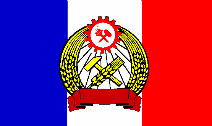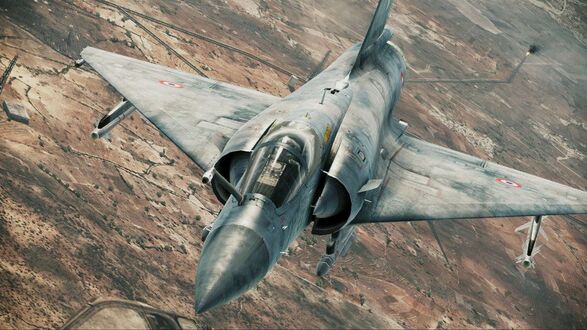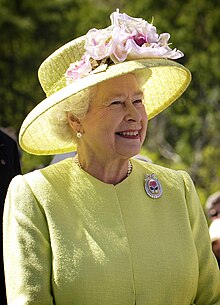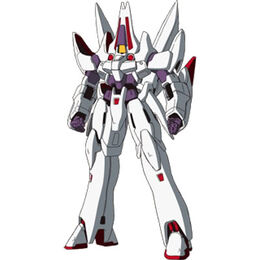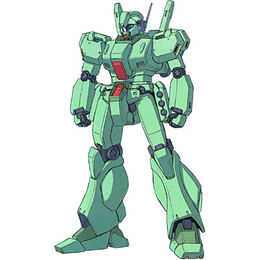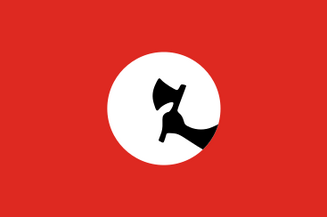National Profile: Germany
(Since outside of news information to help bring people up to speed in the story, as well as some extra currents on the hectic world of Gundam KR, I've decided to give you guys some information on some of the nations of this world, I'll start with the leading nations of the four main alliances, with the first being the world superpower, Germany. The info will be done in Wikipedia-styled format.)

Short Name:
Germany (Deutschland)
Official Name:
German Empire (Deutsches Reich)
----
Motto:
Gott mit uns (God With Us)
----
Anthem:
Heil dir im Siegerkranz (Hail to Thee in Victor's Crown)
----
Capital:(And Largest City)
Berlin
Other Major Cities:
Hamburg, Kiel, Munich, Breslau, Cologne, Frankfurt, Dusseldorf, Stuttgart, Bonn, Königsburg, Bremen, Danzig, Essen, Nuremburg
----
Languages:
Official Language:
German
Other Languages:
Danish, French, Polish, Lithuanian, Frisian, Yiddish, Sorbian
----
Government:
Parliamentary Constitutional Democracy and Federal Monarchy
Head of State:

S.K.H. (His Imperial and Royal Majesty) Frederick V von Hohenzollern, Emperor of Germany and King of Prussia
Head of Government:

Imperial Chancellor: Gerhard Graf von Schröder (Sozialdemokratische Partei Deutschlands/SPD[Social Democratic Party of Germany])
Legislature:
Reichstag/German Diet (Upper House)
Bundesrat/State Council (Lower House)
Current Political Ideology:
Authoritarian Democrat
----
Population:
116.7 million
----
Short History:
Germany is a country in Central Europe. Its borders are shared with Denmark, the North Sea and the Baltic Sea to the North, by Poland, Lithuania and the United Baltic Duchy to the East, by Austria-Hungary and Switzerland to the south and by the Commune of France, Flanders-Wallonia and the Netherlands to the West.
The German Empire is a Constitutional and Federal Monarchy composed of 29 different states, ruled currently by the Hohenzollern Dynasty. The Empire was formed on January 1871 following the Franco-Prussian War (1870-1871). As the main victor of the Weltkrieg, Germany emerged as the world superpower, a position held for the majority of the 20th Century and into the 21st Century. As the leader of the Pax Mitteleuropa Pact, it serves as the leading member of what most consider to be the most powerful military and economic pact in the world.
In addition, Germany also operates colonial possessions directly operated by governors appointed by the German Emperor himself. The sole exceptions are the Free State of Central Africa and the AoG, which operate fully autonomously from the empire.
----
Military:
The German Military is divided into four sections, the Reichsheer (Imperial German Army), the Shutztruppen (Marines), the Kaiserliche Marine (Navy) and the Luftstreitkräte. (Air Force)
The Reichsheer, also known as Das Kaiserliche Detusche Heer or Heer for short, is an efficient military force built upon the quality used by Prussia. As a national Army, it's main purpose is to defend German territory from invasion. The German Army's system is based on conscription, and Military service, although short, is performed in a very professional manner and provides a high quality of military training. Despite other nations within Mitteleuropa adopting this system, the lack of resources and/or highly educated officers hampers its use by other nations.
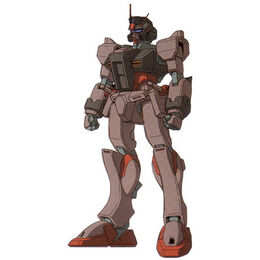
The German Army consists of 6 Panzer Divisions, which operate high-tier Mobile Suits, and Gundams, 8 Mechanized Divisions (Which operates Leopard 2A6 Main Battle Tanks and Mobile Suits), 4 Motorized Divisions, 4 Special Forces Battalions (including the famed 101st Airborne) and 2 Air-Mobile Brigades
The Shutzetruppen is a separate branch and is a fully professional force dedicated to the purpose of the defense of Germany's colonies, both on Earth (Malta, Ascunsion, Saint Helena, Mauritius, Reunion, Scychelles, Diego Garcia, Ceylon, Madagascar and German Somaliland) and in Space. There is a total of 8 Marine Corps Divisions all over the world and in space.

The Das Kaiserliche Marine, also known as the Kriegsmarine, is a strong naval force, consisting of 14 fleet carriers, 3 light carriers, 15 destroyers, 20 frigates, 7 battleships and 18 submarines. The Navy also has an extensive transport fleet to transport troops by sea. It is divided between two groups, the German High Seas Fleet (Deutschlands Hochseeflotte) and German Over Seas Fleet. (Deustches Auslandflotte). The German Space Fleet, also under the jursidiction of the Kriegsmarine, operates 4 Frigates and 6 Corvettes for Space Battle.
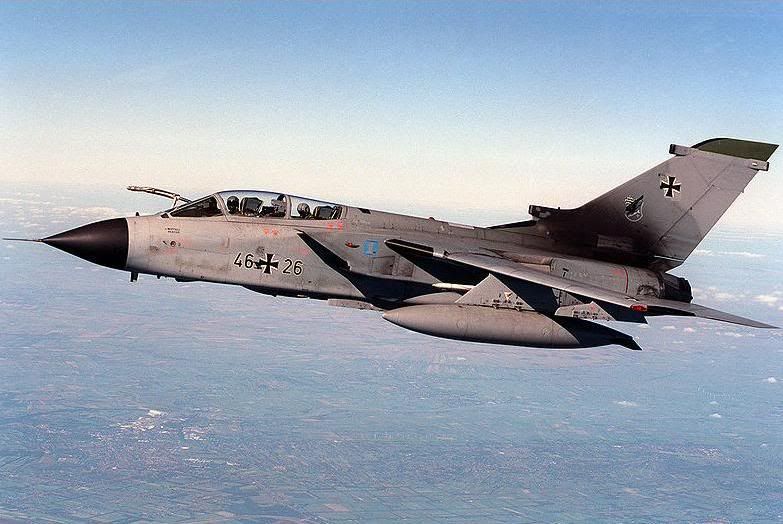
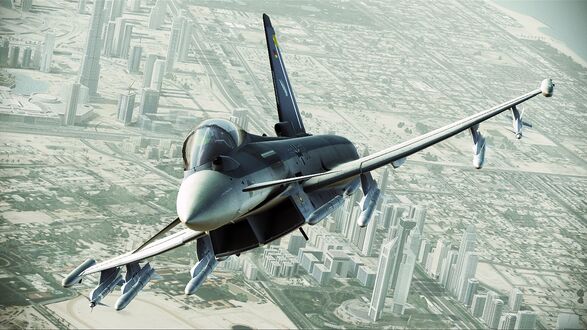
The German Luftstreitkräte (or Luftwaffe) employs 5 Wings of Long-Range Interceptors, each wing utilizing 4 squadrons of the new Messerchmitt Me-2000 Taifun, while they also employ a wing of 8 Strike-Fighter Squadrons equipped with the Paneuropa Tornado, a multinational aircraft built by Germany, North Italy, West Spain and Austria-Hungary. Four Wings of Transport Aircraft (Using the Airbus C-340) and 2 Wings of Intercontinental Strategic Bombers (Heinkel He-2000 Geist) round out the German Imperial Air Force.
Military History and Engagements:
-1891-1898: Hete Rebellion
-1888-1889: Abushiri Rebellion
-1899-1900: Boxer Rebellion
-1904: Anyang Rebellion
-1904-1906: Herero-Hottentots Riots
-1905-1907: Maji-Maji Rebellion
-1911-1917: Tutsi and Hutu Rebellion
-1914-1921: Weltkrieg
-1917-1922: Russian Civil War
-1927: First Austro-Hungarian Civil War
-1937: Second Austro-Hungarian Civil War
-1943: Fall Schnee (First German Intervention in Panama)
-1947-1950: The Pacific War
-1958: Fall Silber (Second German Intervention in Panama)
-1971: Ceylon War
----
Other Information:
States and Territories Within the German Empire: (Capitals in Brackets and Italics)
-
 Kingdom of Prussia (Berlin)
Kingdom of Prussia (Berlin)
-
 Kingdom of Bavaria (Munich)
Kingdom of Bavaria (Munich)
-
 Kingdom of Saxony (Dresden)
Kingdom of Saxony (Dresden)
-
 Kingdom of Württemberg (Stuttgart)
Kingdom of Württemberg (Stuttgart)
-
 Grand Duchy of Baden (Baden-Baden)
Grand Duchy of Baden (Baden-Baden)
-
 Grand Duchy of Hesse and by Rhine (Darmstadt)
Grand Duchy of Hesse and by Rhine (Darmstadt)
-
 Grand Duchy of Mecklenburg-Schwerin (Schwerin)
Grand Duchy of Mecklenburg-Schwerin (Schwerin)
-
 Grand Duchy of Mecklenburg-Strelitz (Strelitz)
Grand Duchy of Mecklenburg-Strelitz (Strelitz)
-
 Grand Duchy of Oldenburg (Oldenburg)
Grand Duchy of Oldenburg (Oldenburg)
-
 Grand Duchy of Saxe-Weimar-Eisenach (Weimar)
Grand Duchy of Saxe-Weimar-Eisenach (Weimar)
-
 Grand Duchy of Troika (Löwengrube)
Grand Duchy of Troika (Löwengrube)
-
 Duchy of Anhalt (Dessau)
Duchy of Anhalt (Dessau)
-
 Duchy of Brunswick (Braunschweig)
Duchy of Brunswick (Braunschweig)
-
 Duchy of Saxe-Altenburg (Altenburg)
Duchy of Saxe-Altenburg (Altenburg)
-
 Duchy of Saxe-Coburg-Gotha (Coburg-Gotha)
Duchy of Saxe-Coburg-Gotha (Coburg-Gotha)
-
 Duchy of Saxe-Meiningen (Meiningen)
Duchy of Saxe-Meiningen (Meiningen)
-
 Principality of Schaumburg-Lippe (Bückeburg)
Principality of Schaumburg-Lippe (Bückeburg)
-
 Principality of Schwarzburg-Rudolstadt (Rudolstadt)
Principality of Schwarzburg-Rudolstadt (Rudolstadt)
-
 Principality of Schwarzburg-Sondershausen (Sondershausen)
Principality of Schwarzburg-Sondershausen (Sondershausen)
-
 Principality of Lippe (Detmold)
Principality of Lippe (Detmold)
-
 Principality of Reuss-Elder Line (Greiz)
Principality of Reuss-Elder Line (Greiz)
-
 Principality of Reuss-Younger Line (Gera)
Principality of Reuss-Younger Line (Gera)
-
 Principality of Waldeck-Pyrmont (Arolsek)
Principality of Waldeck-Pyrmont (Arolsek)
-
 Free Hanseatic City of Bremen (Bremen)
Free Hanseatic City of Bremen (Bremen)
-
 Free and Hanseatic City of Hamburg (Hamburg)
Free and Hanseatic City of Hamburg (Hamburg)
-
 Free and Hanseatic City of Lübeck (Lübeck)
Free and Hanseatic City of Lübeck (Lübeck)
(Since outside of news information to help bring people up to speed in the story, as well as some extra currents on the hectic world of Gundam KR, I've decided to give you guys some information on some of the nations of this world, I'll start with the leading nations of the four main alliances, with the first being the world superpower, Germany. The info will be done in Wikipedia-styled format.)

Short Name:
Germany (Deutschland)
Official Name:
German Empire (Deutsches Reich)
----
Motto:
Gott mit uns (God With Us)
----
Anthem:
Heil dir im Siegerkranz (Hail to Thee in Victor's Crown)
Capital:(And Largest City)
Berlin
Other Major Cities:
Hamburg, Kiel, Munich, Breslau, Cologne, Frankfurt, Dusseldorf, Stuttgart, Bonn, Königsburg, Bremen, Danzig, Essen, Nuremburg
----
Languages:
Official Language:
German
Other Languages:
Danish, French, Polish, Lithuanian, Frisian, Yiddish, Sorbian
----
Government:
Parliamentary Constitutional Democracy and Federal Monarchy
Head of State:

S.K.H. (His Imperial and Royal Majesty) Frederick V von Hohenzollern, Emperor of Germany and King of Prussia
Head of Government:

Imperial Chancellor: Gerhard Graf von Schröder (Sozialdemokratische Partei Deutschlands/SPD[Social Democratic Party of Germany])
Legislature:
Reichstag/German Diet (Upper House)
Bundesrat/State Council (Lower House)
Current Political Ideology:
Authoritarian Democrat
----
Population:
116.7 million
----
Short History:
Germany is a country in Central Europe. Its borders are shared with Denmark, the North Sea and the Baltic Sea to the North, by Poland, Lithuania and the United Baltic Duchy to the East, by Austria-Hungary and Switzerland to the south and by the Commune of France, Flanders-Wallonia and the Netherlands to the West.
The German Empire is a Constitutional and Federal Monarchy composed of 29 different states, ruled currently by the Hohenzollern Dynasty. The Empire was formed on January 1871 following the Franco-Prussian War (1870-1871). As the main victor of the Weltkrieg, Germany emerged as the world superpower, a position held for the majority of the 20th Century and into the 21st Century. As the leader of the Pax Mitteleuropa Pact, it serves as the leading member of what most consider to be the most powerful military and economic pact in the world.
In addition, Germany also operates colonial possessions directly operated by governors appointed by the German Emperor himself. The sole exceptions are the Free State of Central Africa and the AoG, which operate fully autonomously from the empire.
----
Military:
The German Military is divided into four sections, the Reichsheer (Imperial German Army), the Shutztruppen (Marines), the Kaiserliche Marine (Navy) and the Luftstreitkräte. (Air Force)
The Reichsheer, also known as Das Kaiserliche Detusche Heer or Heer for short, is an efficient military force built upon the quality used by Prussia. As a national Army, it's main purpose is to defend German territory from invasion. The German Army's system is based on conscription, and Military service, although short, is performed in a very professional manner and provides a high quality of military training. Despite other nations within Mitteleuropa adopting this system, the lack of resources and/or highly educated officers hampers its use by other nations.

The German Army consists of 6 Panzer Divisions, which operate high-tier Mobile Suits, and Gundams, 8 Mechanized Divisions (Which operates Leopard 2A6 Main Battle Tanks and Mobile Suits), 4 Motorized Divisions, 4 Special Forces Battalions (including the famed 101st Airborne) and 2 Air-Mobile Brigades
The Shutzetruppen is a separate branch and is a fully professional force dedicated to the purpose of the defense of Germany's colonies, both on Earth (Malta, Ascunsion, Saint Helena, Mauritius, Reunion, Scychelles, Diego Garcia, Ceylon, Madagascar and German Somaliland) and in Space. There is a total of 8 Marine Corps Divisions all over the world and in space.

The Das Kaiserliche Marine, also known as the Kriegsmarine, is a strong naval force, consisting of 14 fleet carriers, 3 light carriers, 15 destroyers, 20 frigates, 7 battleships and 18 submarines. The Navy also has an extensive transport fleet to transport troops by sea. It is divided between two groups, the German High Seas Fleet (Deutschlands Hochseeflotte) and German Over Seas Fleet. (Deustches Auslandflotte). The German Space Fleet, also under the jursidiction of the Kriegsmarine, operates 4 Frigates and 6 Corvettes for Space Battle.


The German Luftstreitkräte (or Luftwaffe) employs 5 Wings of Long-Range Interceptors, each wing utilizing 4 squadrons of the new Messerchmitt Me-2000 Taifun, while they also employ a wing of 8 Strike-Fighter Squadrons equipped with the Paneuropa Tornado, a multinational aircraft built by Germany, North Italy, West Spain and Austria-Hungary. Four Wings of Transport Aircraft (Using the Airbus C-340) and 2 Wings of Intercontinental Strategic Bombers (Heinkel He-2000 Geist) round out the German Imperial Air Force.
Military History and Engagements:
-1891-1898: Hete Rebellion
-1888-1889: Abushiri Rebellion
-1899-1900: Boxer Rebellion
-1904: Anyang Rebellion
-1904-1906: Herero-Hottentots Riots
-1905-1907: Maji-Maji Rebellion
-1911-1917: Tutsi and Hutu Rebellion
-1914-1921: Weltkrieg
-1917-1922: Russian Civil War
-1927: First Austro-Hungarian Civil War
-1937: Second Austro-Hungarian Civil War
-1943: Fall Schnee (First German Intervention in Panama)
-1947-1950: The Pacific War
-1958: Fall Silber (Second German Intervention in Panama)
-1971: Ceylon War
----
Other Information:
States and Territories Within the German Empire: (Capitals in Brackets and Italics)
-

-

-

-

-

-

-

-

-

-

-

-

-

-

-

-

-

-

-

-

-

-

-

-

-

-

Last edited:
